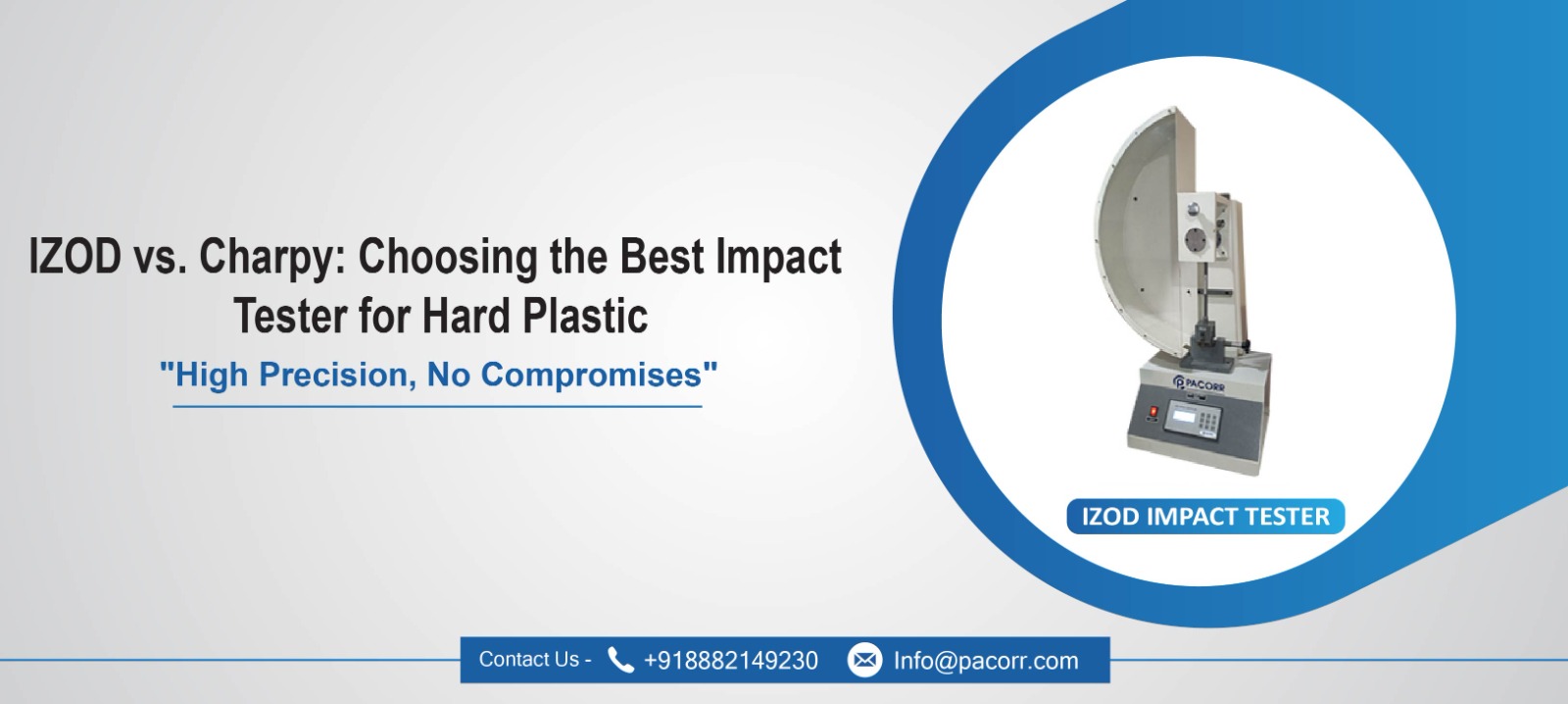
 When it comes to assessing the impact resistance of hard plastics, two prominent testing methods stand out: the IZOD and Charpy impact tests. Both methods are widely used in various industries to evaluate a material's ability to withstand sudden force or shock. However, the choice between IZOD and Charpy impact testers depends on the specific requirements of your application. In this blog, we will compare these two testing methods to help you determine which one is the best fit for your needs.
When it comes to assessing the impact resistance of hard plastics, two prominent testing methods stand out: the IZOD and Charpy impact tests. Both methods are widely used in various industries to evaluate a material's ability to withstand sudden force or shock. However, the choice between IZOD and Charpy impact testers depends on the specific requirements of your application. In this blog, we will compare these two testing methods to help you determine which one is the best fit for your needs.
Understanding the IZOD Test
The IZOD impact test measures the energy required to break a notched specimen. This test method is especially suitable for hard plastics and composites, as it focuses on the material's toughness and resistance to sudden impacts. During the test, a swinging pendulum strikes the notched specimen, and the energy required to fracture it is measured in joules.
IZOD testing is particularly advantageous for materials with high impact strength, such as polycarbonate, acrylic, and certain engineering thermoplastics. It provides valuable information about a material's brittleness and can help engineers design components that can withstand sudden shocks and impacts.
The Charpy Impact Test
The Charpy impact test, on the other hand, also measures the energy required to fracture a specimen but utilizes a different testing configuration. Instead of a notched specimen, Charpy testing employs a notched or unnotched rectangular sample. A pendulum strikes the specimen, and the energy required for fracture is determined in joules.
While Charpy testing is widely used for assessing the impact resistance of materials, it is primarily designed for metals and metallic alloys. It is not as common for hard plastics and polymers as the IZOD test. Charpy testing tends to provide limited information about a plastic material's toughness, making it less suitable for evaluating the impact resistance of hard plastics.
Choosing the Right Test for Hard Plastics
The choice between IZOD and Charpy impact testing for hard plastics ultimately depends on your specific needs and the material you are testing. Here are some considerations to help you decide:
Material Type: If you are working with hard plastics or polymers, the IZOD test is generally more suitable. It provides a better assessment of a material's toughness and brittleness, which is essential for plastic components.
Regulatory Requirements: Some industries and standards may specify a preferred testing method. Make sure to adhere to any relevant regulations and standards for your application.
Testing Environment: Consider the conditions under which your plastic components will be used. If they are likely to experience sudden impacts or shocks, IZOD testing is more representative of real-world conditions.
Comparative Analysis: In some cases, you may want to perform both IZOD and Charpy tests to obtain a comprehensive understanding of your material's impact resistance.
Material Specifics: If you are working with a specific type of plastic, consult with experts or testing professionals to determine the most appropriate testing method.
In conclusion, while both the IZOD and Charpy impact tests have their merits, the choice between them for assessing hard plastics largely depends on the specific requirements of your application and the material being tested. For most hard plastics, the IZOD test is the preferred method due to its focus on toughness and resistance to sudden impacts. Make an informed decision based on your needs and industry standards, and consult with experts if necessary to ensure accurate and reliable results for your materials.
Thanks to Pacorr Testing instruments, we have all the required quality testing instruments that have helped us to ensure the best quality delivered to our clients.

Danish
Fair Exports Pvt. Ltd.

